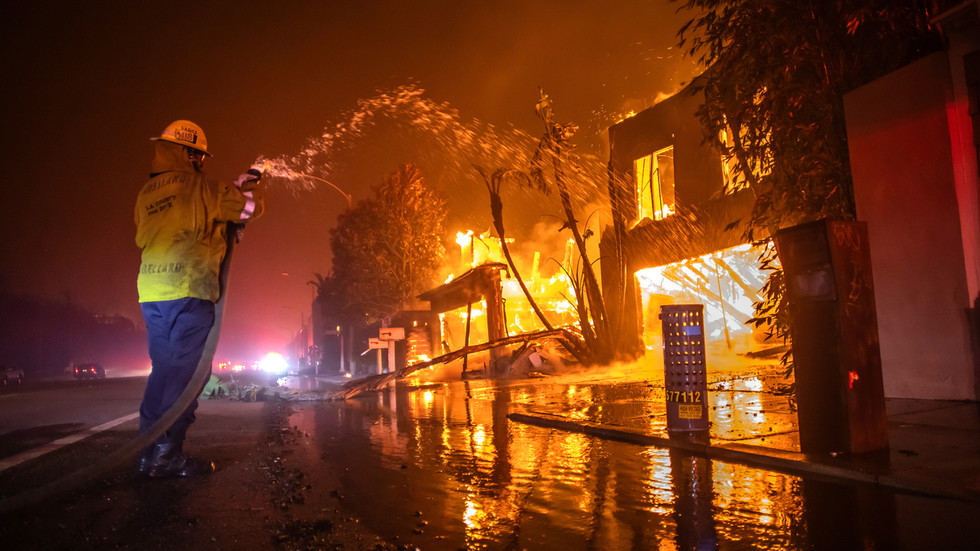Rising Flames: The Escalating Toll of Los Angeles Wildfires
As wildfires rage across Los Angeles, local officials warn that the death toll could increase. This crisis highlights the urgent need for effective fire management strategies and community preparedness. Wildfires have become an alarming reality for the residents of this sprawling city, where the interplay between urban development and natural landscapes creates a perfect storm for disaster. The increasing frequency and intensity of these fires not only threaten lives but also inflict severe damage on the environment and local economies.
The Current State of Wildfires in Los Angeles
Wildfires in Los Angeles have reached unprecedented levels in recent years. With the combination of prolonged drought, rising temperatures, and strong Santa Ana winds, the conditions are ripe for fire outbreaks. In the latest season, several major wildfires have erupted, leading to evacuations, destruction of property, and tragic loss of life.
According to the California Department of Forestry and Fire Protection (Cal Fire), 2023 has seen a significant increase in the number of acres burned compared to previous years. The most notable fires include:
- The Angeles National Forest Fire: Spreading rapidly, this fire has consumed thousands of acres and continues to threaten nearby communities.
- The San Bernardino Complex: A cluster of fires that have merged into a larger blaze, causing extensive evacuations and road closures.
- The Woolsey Fire Legacy: Although not as recent, the aftermath of the Woolsey Fire in 2018 still affects the region, with ongoing recovery efforts hampered by new fire threats.
Local officials have expressed concern that as wildfires escalate, the potential for increased fatalities looms large. Emergency services are stretched thin, and the urgent need for effective fire management strategies has never been clearer.
Impacts on Communities and Environment
The impacts of the wildfires extend far beyond immediate destruction. Communities are left grappling with grief and uncertainty, especially as the flames encroach on residential areas. The psychological toll on residents, who may have lost their homes or loved ones, is profound and long-lasting.
Moreover, the environmental repercussions are severe:
- Air Quality: Smoke from the fires contributes to hazardous air quality, leading to health issues for vulnerable populations, including children and the elderly.
- Wildlife Displacement: Fires disrupt local ecosystems, forcing wildlife to flee their habitats, often leading to increased human-wildlife conflicts.
- Soil Erosion: The loss of vegetation due to fire can result in soil erosion, which increases the risk of flooding during rain events.
Community Preparedness: A Crucial Element
In light of the escalating wildfires, community preparedness is paramount. Local authorities and organizations are ramping up efforts to educate residents on fire safety and emergency response. Here are some key strategies being promoted:
- Evacuation Plans: Residents are encouraged to familiarize themselves with evacuation routes and have a plan in place for themselves and their pets.
- Defensible Space: Homeowners are advised to create defensible space around their properties by clearing flammable vegetation and maintaining landscaping.
- Emergency Kits: Having an emergency supply kit that includes essentials like water, food, medications, and important documents can be life-saving.
Furthermore, community engagement plays a crucial role in preparedness. Neighborhood groups are organizing workshops and drills to ensure everyone knows how to respond in case of an emergency.
The Role of Technology in Fire Management
Advancements in technology are also paving the way for improved fire management strategies. Tools such as satellite monitoring, drones, and predictive modeling systems are being utilized to enhance firefighting efforts. These technologies allow for:
- Early Detection: Satellites can detect heat signatures from wildfires in their infancy, allowing for quicker responses.
- Mapping and Analysis: Geographic Information Systems (GIS) provide crucial data for understanding fire behavior and potential spread.
- Resource Allocation: Drones equipped with infrared cameras help assess damage and identify hotspots, ensuring that resources are deployed effectively.
Integrating these technologies into fire management can significantly reduce response times and improve outcomes during wildfire events.
Long-Term Solutions: Policy and Planning
While immediate responses are vital, long-term solutions are essential for mitigating the impact of wildfires in Los Angeles. Policymakers must prioritize investments in infrastructure, land management, and community education. Some proposed measures include:
- Forest Management: Implementing controlled burns and thinning of dense forests can reduce fuel loads and lower the risk of catastrophic fires.
- Urban Planning: Developing fire-resistant building codes and zoning regulations can help minimize risks in high-fire zones.
- Funding for Emergency Services: Increasing funding for firefighting resources and personnel ensures that communities are better prepared for future events.
The collaboration between government agencies, local communities, and environmental organizations is crucial in crafting effective policies that address the complexities of wildfire management.
The Path Forward: Hope Amidst the Flames
As wildfires continue to wreak havoc across Los Angeles, there remains a glimmer of hope. The resilience of the community, combined with advancements in fire management and a commitment to preparedness, lays the groundwork for a more secure future. Although the challenges are daunting, proactive measures can mitigate risks and protect both lives and property.
In conclusion, the rising flames of wildfires in Los Angeles underscore the urgent need for comprehensive strategies that encompass community preparedness, technological advancements, and effective policy reforms. By fostering a culture of resilience and collaboration, residents can face the threat of wildfires with strength and determination, ensuring that they are not just surviving but thriving in the face of adversity.
See more Your Daily Weather



